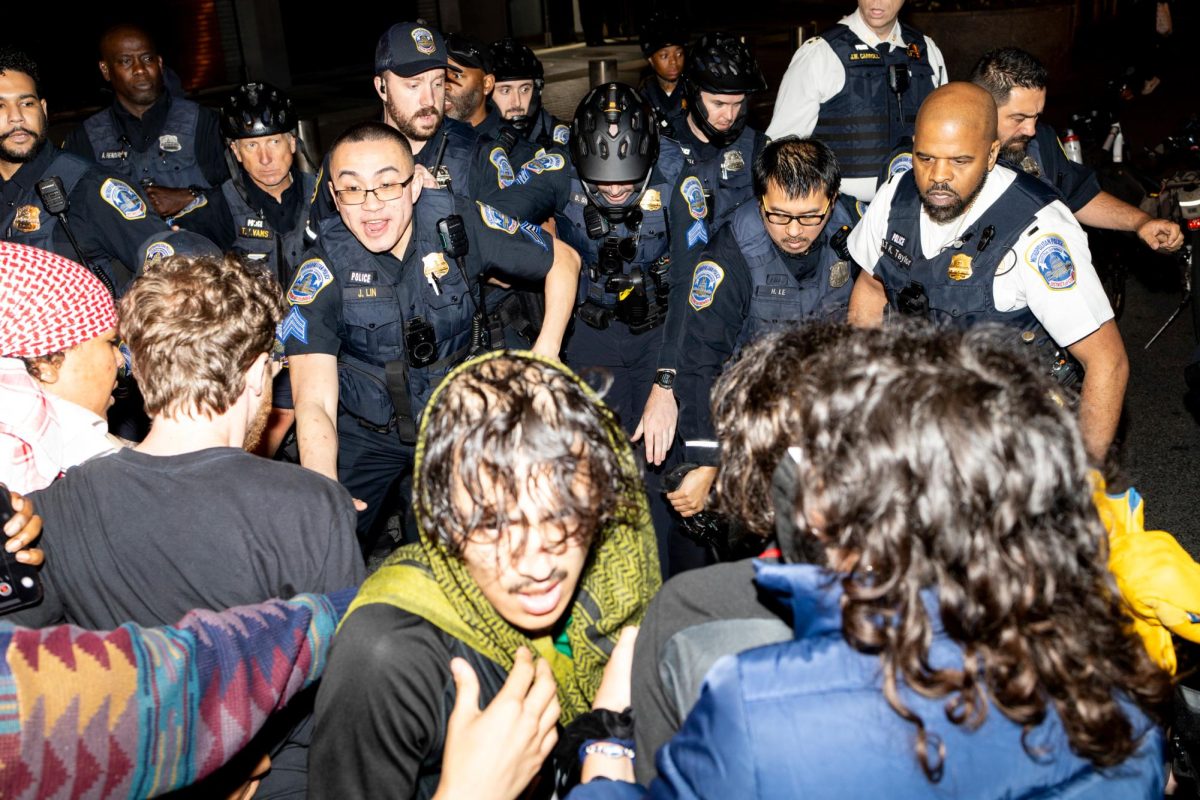The number of students studying across multiple schools dropped by about 30 percent this year after growing by 136 percent over the last decade, according to the University’s annual core indicators report.
The report, presented at a Faculty Senate meeting Friday, states that 1,315 students studied across GW’s schools in 2023 compared to 1,870 in 2022 — a drop from 18.8 percent to 13.1 percent of undergraduates — marking the lowest proportion of undergraduates studying in multiple schools since 2016. Students and experts in higher education said increasing tuition costs and limited class enrollment for classes prevent students from pursuing multiple majors or minors.
“It’s signaling that students are perhaps becoming a little bit more narrowly focused when they think about their education and training,” Provost Chris Bracey said at the meeting.
The report states that 3.9 percent of students pursued two majors in different schools in 2023, a slight drop from 4.3 percent in 2022. About 9 percent of students had one major and one minor across schools in 2023, compared to 14.5 percent in 2022, according to the report. The number of students studying across two or more schools increased by 136 percent from 2012-22.
Bracey said officials may need to adjust curriculum requirements to ensure students studying in one school are still “well-rounded” academically and learn interdisciplinary skills that incorporate multiple areas of study.
“We may have to start thinking more intentionally about including quantitative coursework in the liberal arts and social science curriculum and including some social science and humanities work in the science curriculum,” Bracey said at the meeting.
Experts in higher education administration and interdisciplinary studies said high tuition costs and a STEM focus could contribute to the recent drop in students pursuing majors across schools.
Jordan Emely, an academic advisor at George Mason University’s Costello College of Business, said the rising cost of tuition makes students less inclined to study multiple subjects because they worry they will need to pay to take additional credit hours in order to graduate on time. He said classes like labs have individual course fees that discourage students from trying out another field.
Students who register for more than 18 credits are charged $2,080 for each additional credit hour.
“The cost of higher education isn’t getting any cheaper and students have to take more classes inherently to get two degrees, or to double major,” Emely said.
Emely said he is seeing a “societal change” in higher education in which students are more focused on pursuing one degree to prepare them for a specific job. He said students also realize studying across schools requires multiple skill sets, which deters them from taking on the additional work.
“Some people are like ‘Oh, I’ll just double major in finance and econ, or I’ll just double major in education and biomechanical engineering,’” Emely said. “Those are two vastly different fields and so you need to be in two vastly different mindsets to be able to complete the requirements for those specific degrees.”
Paul Williams, an assistant director of admissions at Vermont State University, said the interdisciplinary studies program at VTSU, which allows students to explore multiple fields, has grown in the last two to three years, even as the university has struggled to increase overall enrollment. He said universities with a more “technical” focus like STEM are likely to see fewer students interested in interdisciplinary studies because students want a career-oriented, as opposed to a general, curriculum.
Students double-majoring across schools said interdisciplinary education is rewarding but they are concerned about securing a seat in all the courses they need to take to graduate.
Athena Rodrigues, a senior studying international affairs and data science, said it has been easy for her to complete two majors in separate schools because some of her data science courses also fulfilled requirements within her Bachelor of Science in international affairs.
She said despite the two majors’ differing focuses on liberal arts and STEM, she has learned technical and hands-on coding skills for data science and analytical skills for international affairs that will prepare her well for post-graduation.
Rodrigues said her experience double majoring across schools has mostly been straightforward but she often has to complete registration transaction forms to get a spot in required classes for her majors that she needed that semester but were already full. She said she mapped out her schedule so she could take the required classes for both majors but there is no flexibility with when she can take them.
“That was a big struggle because there’s so many requirements that you have to do and you have to get to the certain classes for it,” Rodrigues said.
Sydney Boyd, a sophomore studying international affairs and public health, said her interdisciplinary studies have increased her interest in protecting reproductive rights on a global level. She said she is learning interdisciplinary analysis and comprehension skills but has to take 18 credits almost every semester to graduate in four years.
“When it starts getting closer to senior year, that 18 credits will be a little hard,” Boyd said.
Boyd said she has emailed professors a few times to request a seat in their class because they were full and she needed to fulfill the requirement that semester. She said public health classes are difficult to register for and require certain prerequisites to continue on her four-year graduation track.
“I had to email a professor because especially public health courses are so hard to get and obviously the registration process is by credit,” Boyd said.





